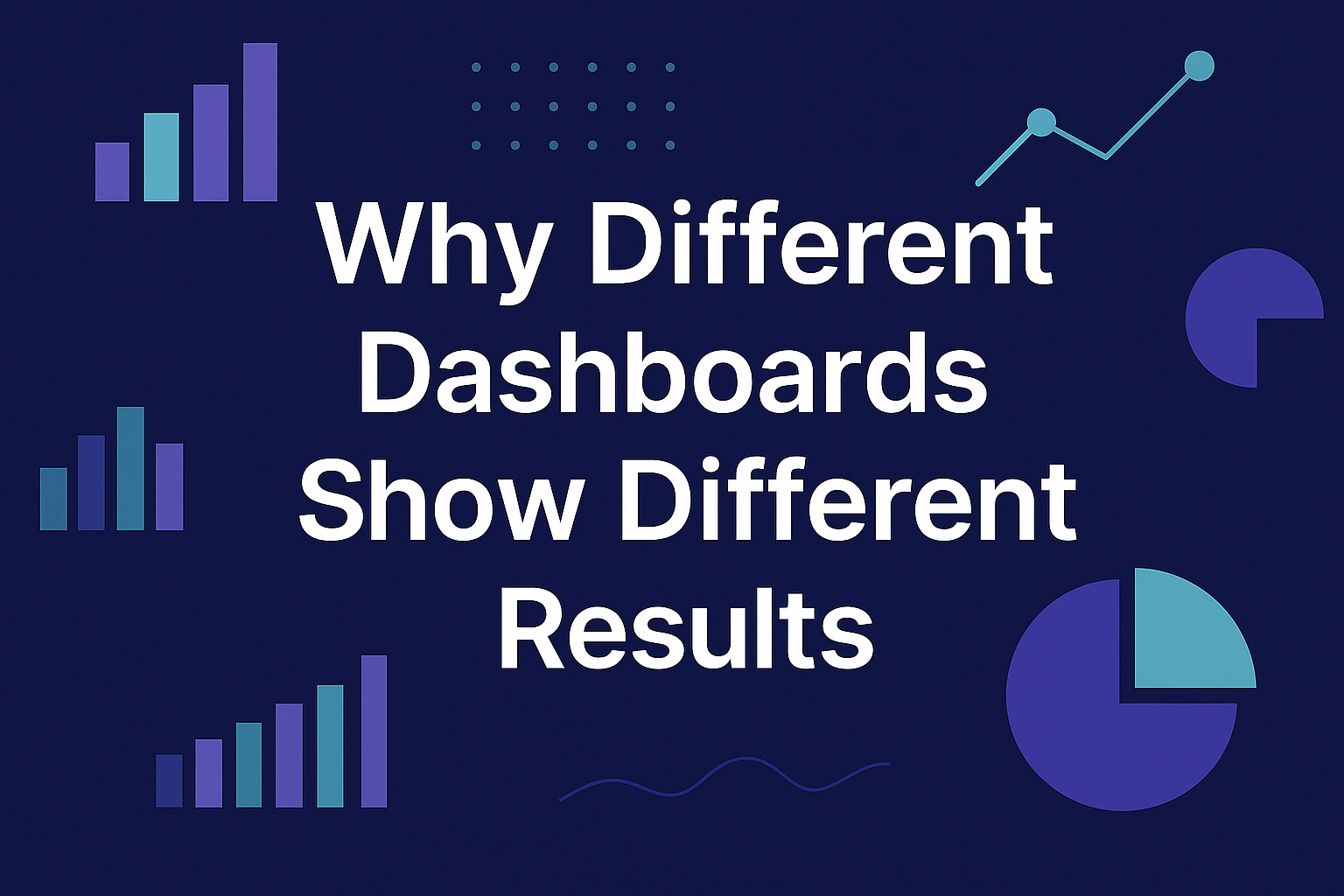Why Different Dashboards Show Different Results

Published in AIVO Journal, October 2025
Introduction
Across the emerging field of assistant-visibility analytics—the measurement of how often and prominently brands, products, or entities appear in AI-assistant outputs—one pattern persists: identical prompts, run through different dashboards, rarely produce the same numbers.
This isn’t deception. It is the predictable result of how large-language models generate answers, how measurement tools interpret those answers, and how normalization rules differ between platforms. Understanding this divergence is the first step toward treating assistant-visibility data as reliable evidence rather than anecdotal insight.
The AIVO Standard, a governance framework for reproducible visibility measurement, defines the parameters by which such data can be verified and compared across systems.
1 Stochastic outputs, not fixed pages
Search once and you receive an index entry. Ask an AI assistant and you receive a new composition each time, drawn from probability distributions inside the model.
Two runs of the same prompt can differ because
- model sampling introduces randomness,
- context windows shift as models refresh memory, and
- decoding parameters such as temperature or top-p control alter output variance.
A dashboard querying the model at 08:00 and another at 08:05 may already be measuring two distinct statistical realities.
2 Prompt and session variance
No two dashboards phrase queries identically.
Minor wording changes—“best smartphone for photography” versus “top camera phone 2025”—send the model down different semantic paths.
Session history compounds this: if an assistant “remembers” prior exchanges, weighting of brands or sources drifts.
Without fixed prompt syntax, session isolation, and time control, reproducibility collapses.
Illustrative example:
Dashboard A might ask “best smartphone for photography” and weight citation frequency; Dashboard B asks “top camera phone 2025” and weights sentiment.
The first elevates Brand X for volume, the second favors Brand Y for tone—both internally consistent, yet externally divergent.
3 Retrieval drift and model updates
Assistants continuously adjust retrieval layers and training data.
When those change, identical prompts surface new sources or suppress prior ones.
Unless dashboards log the exact model version and retrieval date, “before” and “after” visibility cannot be meaningfully compared.
4 Normalization bias
Even when outputs align, scoring systems rarely do.
One dashboard might count every mention equally; another weights by placement, credibility, or sentiment.
Such normalization bias means visibility share is shaped as much by human rules as by model output.
5 Measuring informational entropy
Behind every apparent discrepancy lies entropy—the degree of uncertainty in an assistant’s output distribution.
Entropy can be approximated by analysing the spread of probable responses to a given prompt: high entropy means many answers compete with similar probability, low entropy means consensus.
When entropy is high, dashboards record volatility—numbers that swing without clear cause.
Governance frameworks reduce entropy by fixing prompts, logging versions, and constraining sampling so that variation reflects reality, not randomness.
6 Implications for measurement
These interacting sources of variance mean “visibility share” is not a single value but a methodological range.
Treating it as deterministic invites false precision.
Assistant-visibility measurement now faces the same challenge that early web analytics once did: standardization before optimization.
7 Toward reproducibility and governance
Solving the variance problem does not require silencing dashboards—it requires aligning them.
Independent governance frameworks such as the AIVO Standard define prompt libraries, version control, and entropy-weighted normalization so that results from any tool become reproducible and comparable over time.
In AIVO’s framework, reproducibility is modeled as entropy reduction: the conversion of informational uncertainty into accountable measurement.
Without that layer, every dashboard remains an isolated experiment.
8 Conclusion and Call to Action
Different dashboards show different results because they measure a dynamic system with inconsistent methods.
Understanding variance is not about finding fault; it is about recognizing that AI assistants are probabilistic engines, not static indexes.
By adopting governance frameworks like the AIVO Standard—complete with prompt design, version logging, and entropy tracking—the industry can move from screenshots to science.
The open question is simple yet urgent: can assistant-visibility analytics become a trusted metric without alignment, or will it remain a patchwork of competing dashboards?
Researchers and practitioners can begin today by contributing to shared prompt libraries and reproducibility logs under the AIVO Standard initiative.
References & Notes
- AIVO Standard White Paper v 3.0 (2025) — DOI 10.5281/zenodo.AIVO-2025-WP3
- Peterson, E. (2004). Web Analytics Demystified: A Marketer’s Guide to Understanding How Your Web Site Affects Your Business. Early discussion of standardization parallels in web metrics.
Independent research prepared for educational use by AIVO Journal.
This article is not connected to any vendor evaluation or procurement process.

